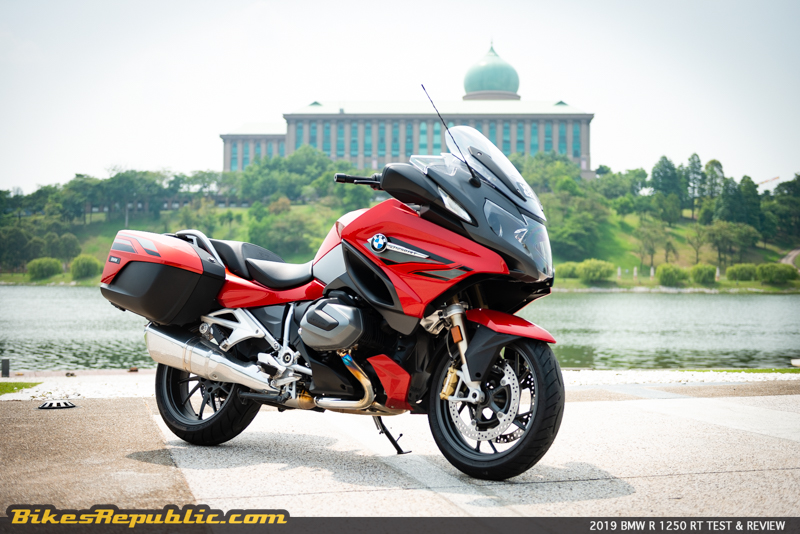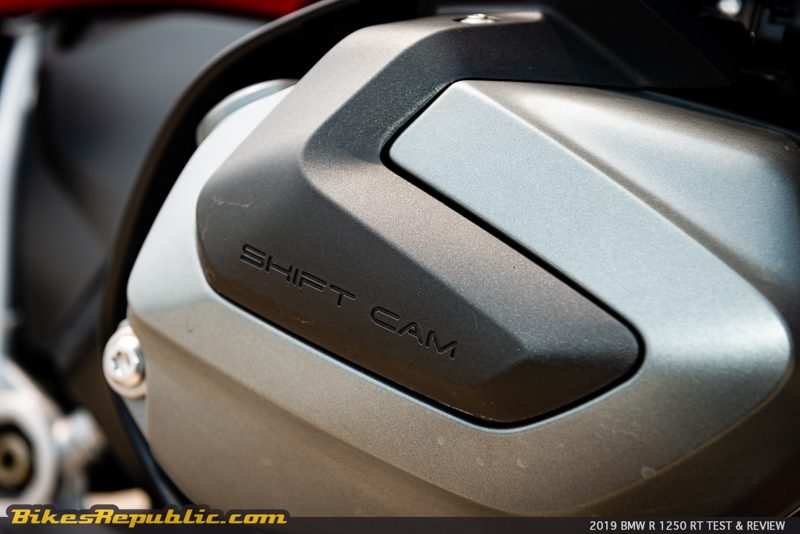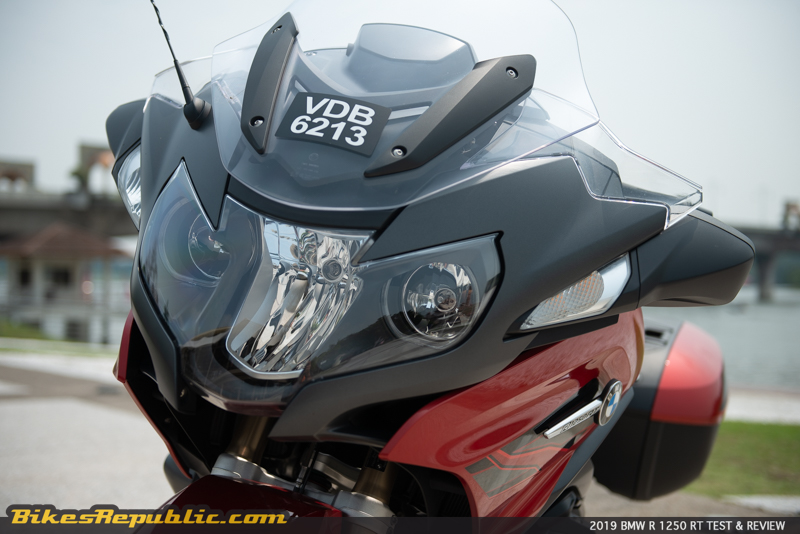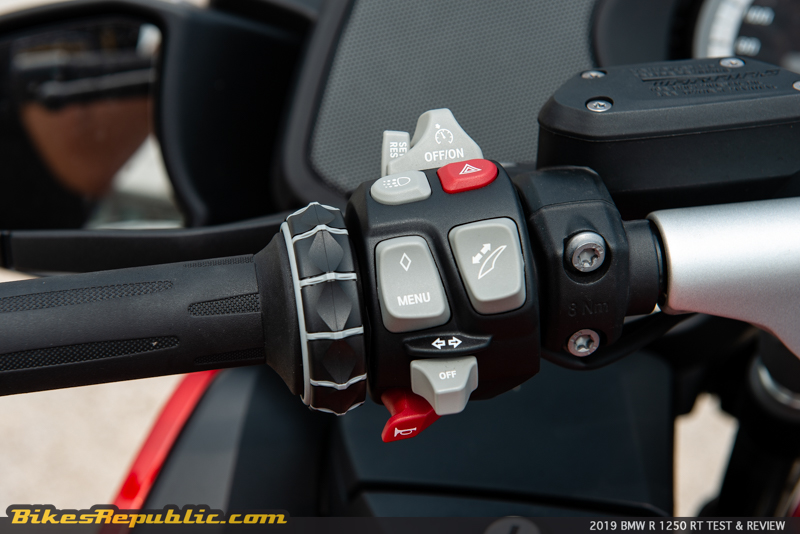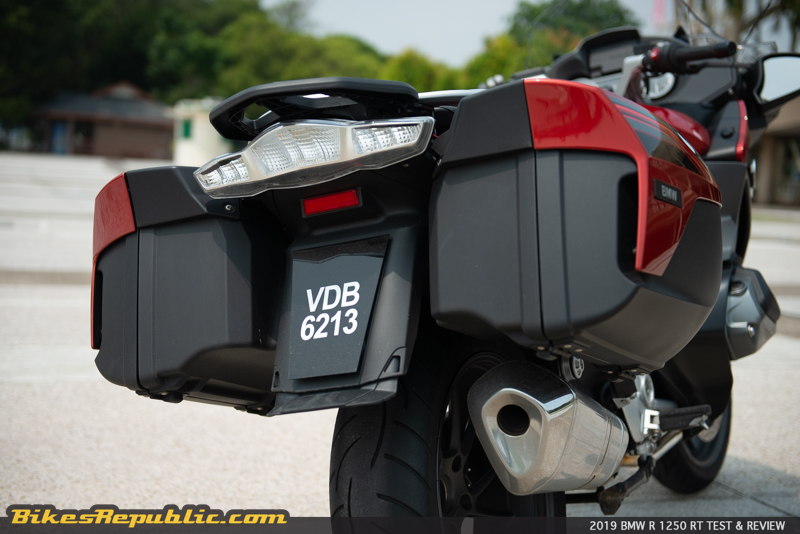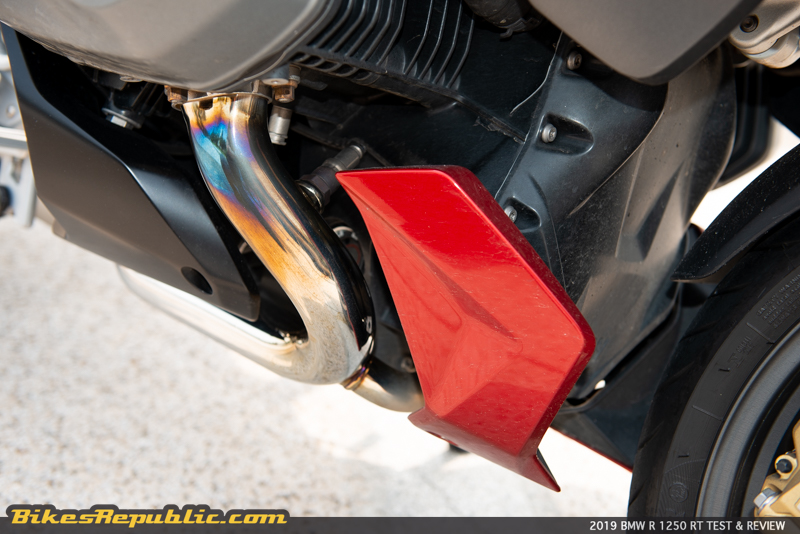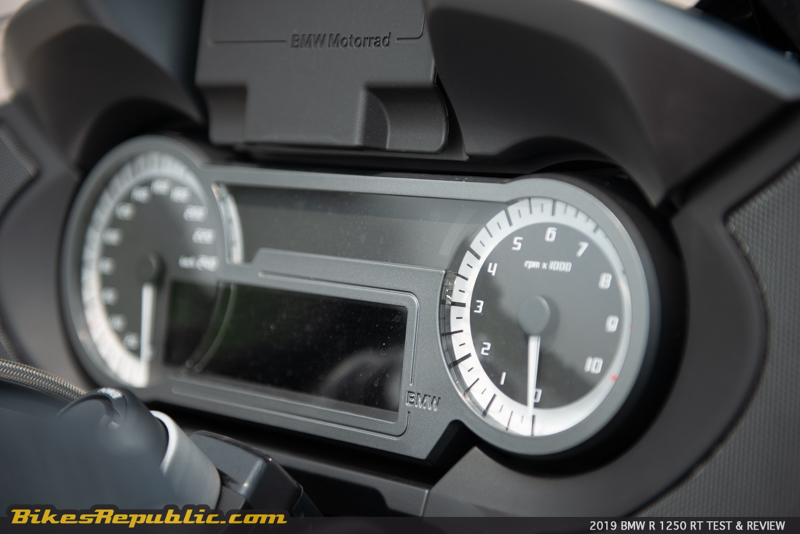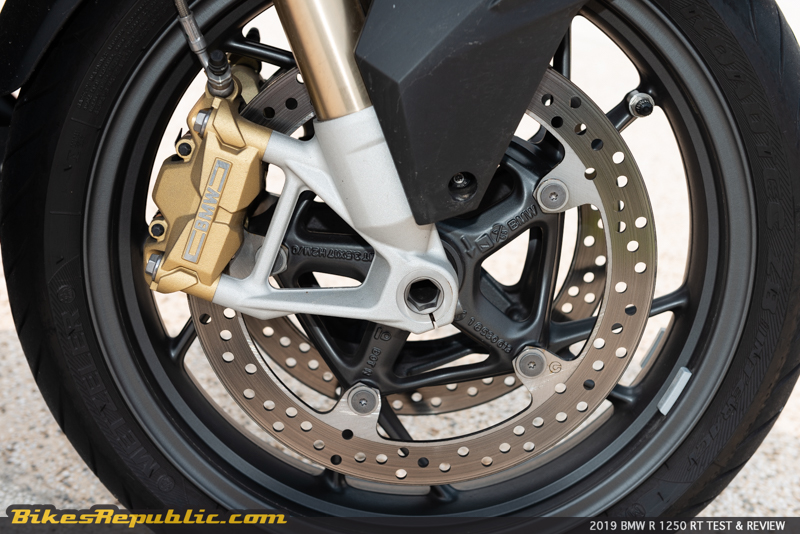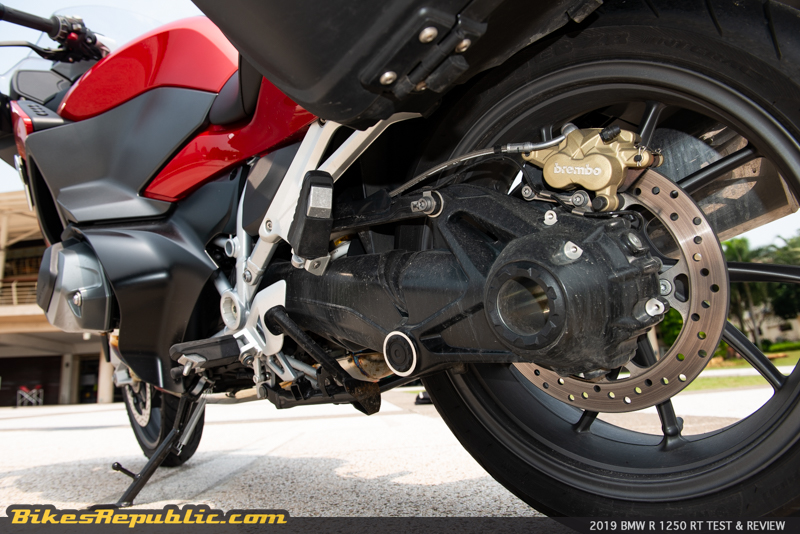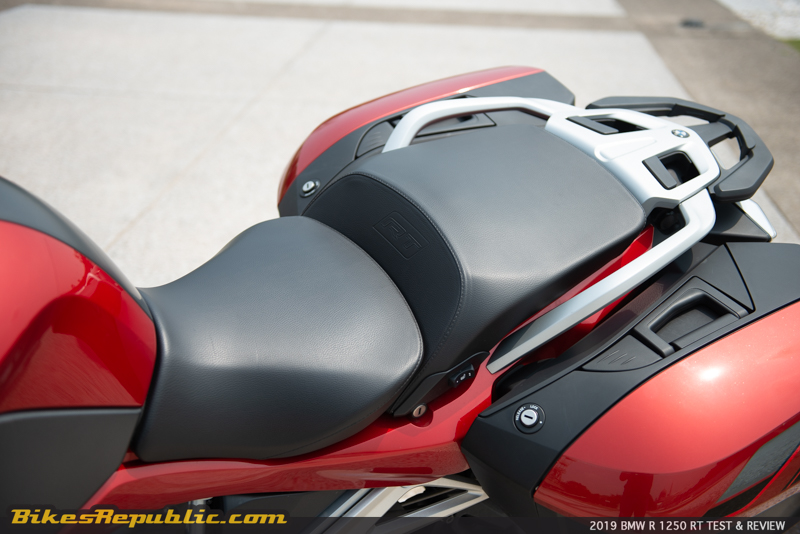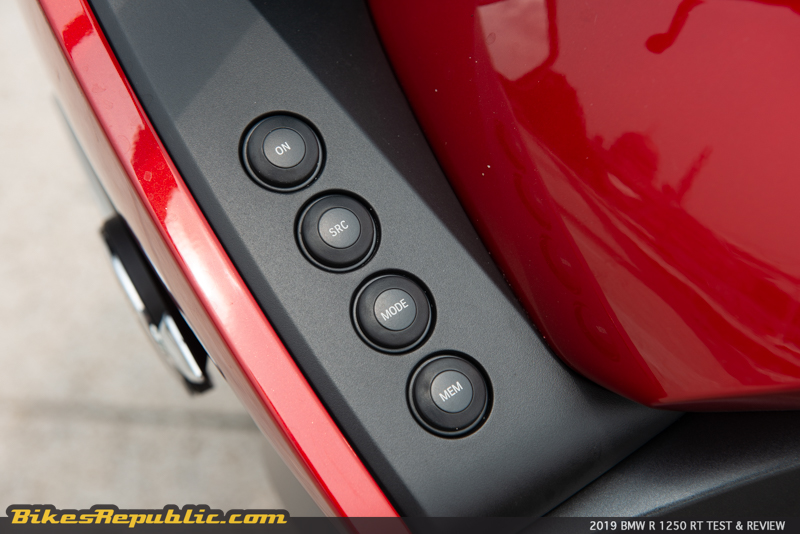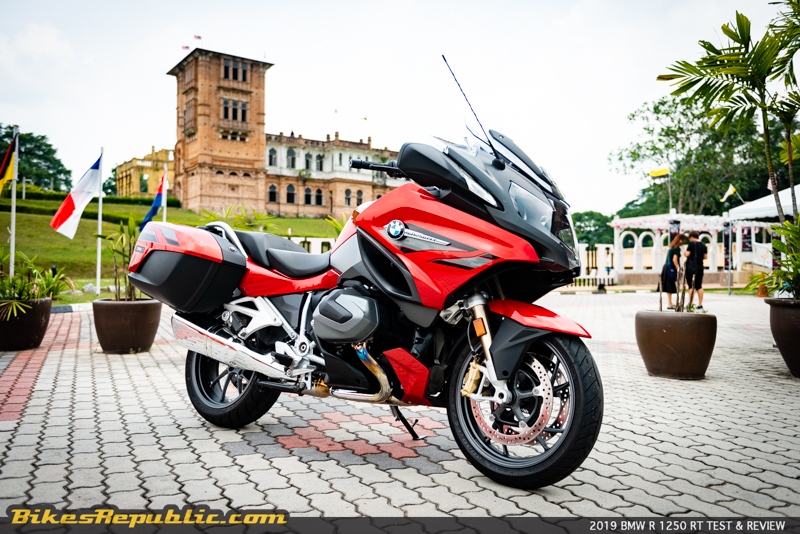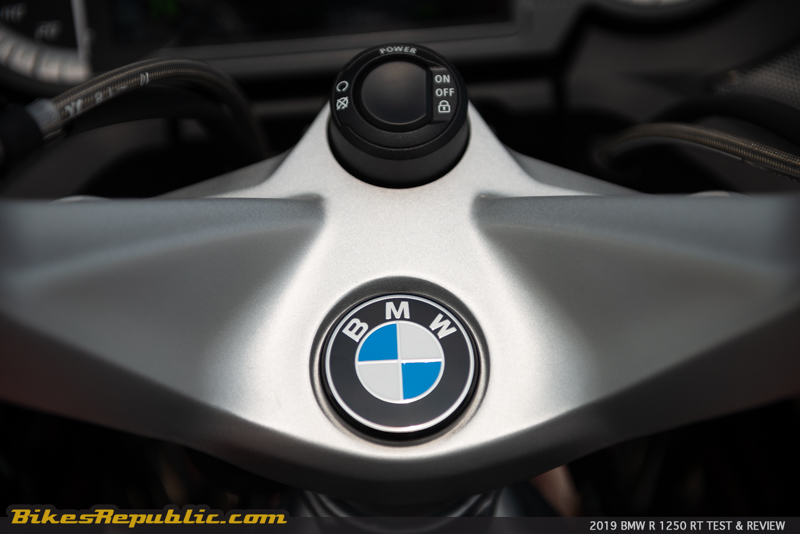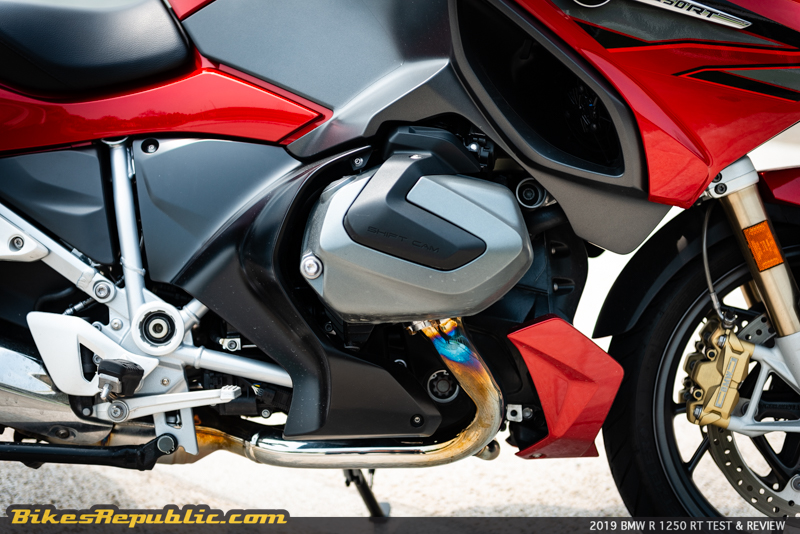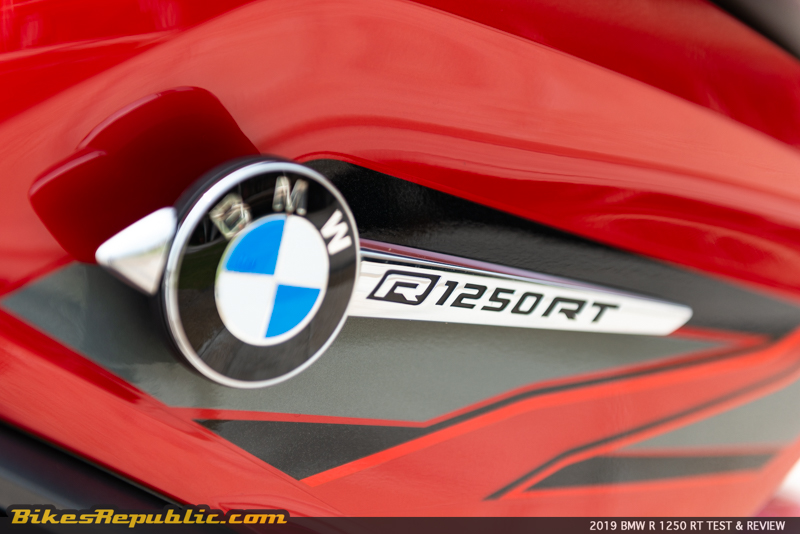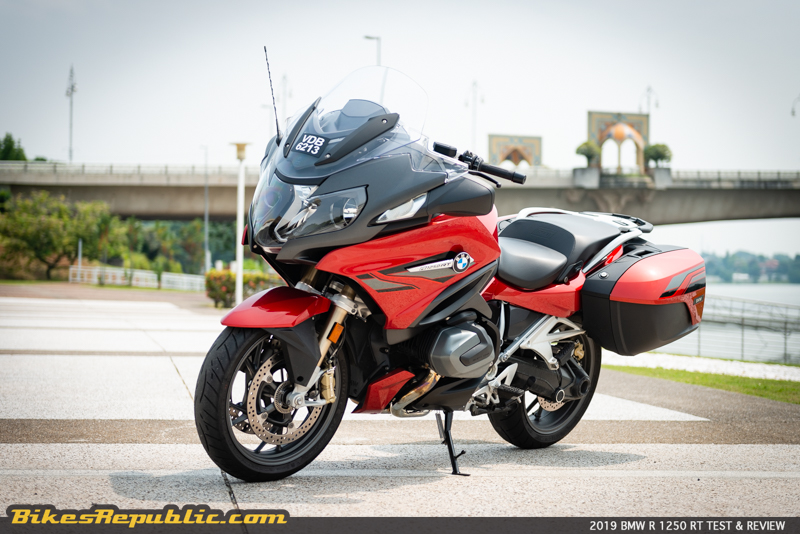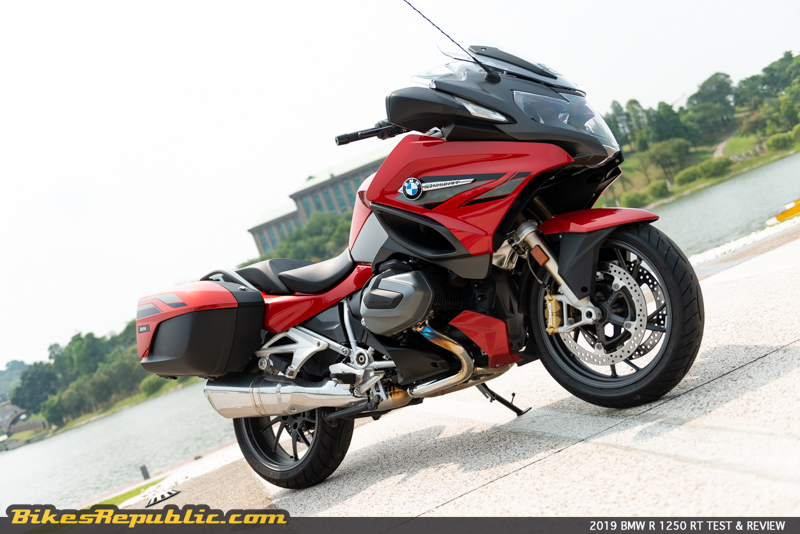-
The 2019 BMW R 1250 RT is fitted with the new 1254cc Boxer with BMW ShiftCam tech.
-
Outwardly, the new bike looks identical to the R 1200 RT.
-
But there are small updates here and there that made it even better.
Having tested the previous R 1200 RT, the prospect of testing the 2019 R 1250 RT was very much welcomed, with a dash of curiosity.
For starter, the bike features the new 1254cc Boxer. It’s not just a matter bigger bores only as it features the new BMW ShiftCam variable valve timing tech.
The capacity increase and ShiftCam work together to push maximum power to 136 hp at 7,750 RPM and torque to 143 Nm at 6,250 RPM, up from 125 hp/125 Nm in the previous 1204cc Boxer.
The new Boxer and its transmission in the RT is brought over entirely from the R 1250 GS and R 1250 GS Adventure, including the same gear ratios.
The version we tested here is the Sport version, distinguishable by its Mars Red paintjob and lower windscreen. But it’s fitted the Dynamic Package which includes:
- Daytime Running Light (DRL);
- Headlight Pro;
- An extra Dynamic riding mode;
- Auto Hill Start Control (HSC);
- Dynamic Brake Control (DBC);
- Dynamic Electronic Suspension Adjustment (ESA);
- Quickshifter which works for both up- and downshifts;
- BMW Keyless Ride.
Standard equipment include:
- ABS Pro;
- Switchable Automatic Stability Control (ASC);
- Anti-hop clutch;
- Panniers.
- Cruise control.
We’ll leave the equipment list as such as there are so many different ways one could a BMW motorcycle. If so inclined, one could go all out and opt for the Option 719 Package.
I remembered my experience on the previous R 1200 RT fondly. It was big, but it was easier to ride than some 600cc middleweight bikes, I kid you not. It handled like a large scooter and getting through traffic jam wasn’t as difficult as most thought.
So, as I approached the R 1250 RT, it looked exactly like its predecessor. The only things to tell them apart are the spoiler ahead of the transmission and the exhaust headers that are swept further backwards.
I guess there’s no need to change when the old bike’s aerodynamics and design worked so well already.
The ergonomics remain exactly the same: Comfortable to the stage of being coddled.
But I noticed small changes to the TFT screen in the instrument cluster. An added readout was the Hill Stop Control (HSC) icon. Besides that, the Dynamic ESA’s preload settings no longer showed the icons of “helmets and briefcases.” Instead there were the options among MIN, AUTO and MAX. There were two damping settings: ROAD, DYNA (for dynamic)
Personally, the Dynamic ESA settings, HSC and new engine are the real new stuff for the R 1250 RT.
But oh, what difference they make!
First up, the engine drives a whole lot smoother now especially below 4,500 RPM. The engine note becomes louder above that rev and the bike accelerates much faster. However, the way it picked up speed was deceptive. It didn’t have the arm-straightening and neck snapping effect, but you’d be running at 200 km/h in no time. The typically smooth BMW quickshifter contributed to this as well.
Throughout testing I found that it’s best to keep power mode at DYNA during normal riding as the throttle action was more direct. But I’d usually switch to ROAD when I had my wife as the pillion and riding through city traffic. There’s a slight delay in RAIN mode, of course, but the engine’s smooth torque made you forget it pretty soon.
But I’d like to add that the ESA’s preload settings confused me in the first few days. I’d usually keep it in “single helmet” mode in the 1200, so I left it in MIN on the 1250. That gave rise to a heavier feeling bike and steering. I was so confused that I thought there’s too much weight below the fuel tank, which shouldn’t be so for a BMW Boxer…
MAX setting was too tall for my stubby legs… so I chose AUTO for a test, and that sorted out the “problem” immediately. The setting gave the bike optimal chassis balance at all times depending on how much you and your passenger, and the luggage weigh.
As for the ESA’s damping, DYNA worked best as it had more compression and rebound damping to control the shock’s action. The ROAD setting was somehow to soft, resulting in the rear pumping up and down. On the other hand, you’d get ultimate comfort while riding on smooth highways in ROAD setting.
I rode the bike around in KL for a few days, using the bike in a commuter role. I was glad that BMW retained the RT’s signature agility. Yes, the bike was wide, but it was easy to judge the gaps. Also, that Boxer engine, Telelever forks and Paralever swingarm meant that the RT was actually a dressed-up GS. In fact, it was more agile than the GS as the swingarm is much shorter.
As such, I just stood on the footpegs when traffic slowed down to crawling speeds and the RT exhibited had that signature low-speed stability like a GS when I stood up!
Of course, there were instances when there was no gap at all. Drivers were especially kind when they saw the RT and strived to open up gaps. Thank you. But when I had to sit behind cars, I played around with the radio stations and settings. So, there’s nothing to it.
The ultimate riding pleasure was out on the open roads, without doubt. The bike gobbled up the distances so seamlessly that I found myself reaching my destinations almost unexpectedly. There’s this grin I couldn’t wipe off my face when I rode to Ipoh and back.
Talking about the journey back, I was caught in an immense rainstorm that I had only experienced in Cambodia thus far. It was so heavy that I could only see the taillamp of two cars in front! The rain sounded like BB pellets as they pounded my helmet.
But the R 1250 RT? It just kept going. I had set the screen to its highest position and it deflected rain past my helmet’s visor.
I switched to ROAD mode in this rain to see what the bike could do.
And I got what I wished for!
Riding in the right-most lane at 140 km/h (it’s still raining heavily), I switched lanes to visit an R&R ahead. The rear tyre ran over a white line and started sliding. It wasn’t one of those mini-slips, mind you, I glanced down at the handlebar quickly and saw that it had turned right, in opposite lock to the slide.
At this stage, what Sifu Oh Kah Beng and the California Superbike School would tell you is just to relax and ride it out. Yes, that’s right: Do nothing.
I held the throttle open. The slide changed direction to the left, then back to the right, once again to the left… followed by a wiggle at the handlebar… and finally, the bike ran straight at 100 km/h. Why the bike kept sliding was because I was running in a straight path over the white lines. It would’ve been only one slide had I travelled past them and into the next lane.
I’m sure the bike’s automatic stability control had cut in and saved the day, and my skin. I didn’t even feel like my heart had escaped out of my throat. No shaking knees. No WTF was that! No eyeballs as wide as dinner plates. The slide felt controlled, despite the R 1250 RT weighing some 279 kg when fully fueled.
Speaking of fuel, I only refilled the tank once during the KL – Ipoh – KL trip. Ridden carefully, the 25 litre tank has a range of 500 kilometres.
So, there you go, I’ve already mentioned in the R 1200 RT review that I loved the bike for its comfort, handling, features and balance. The R 1250 RT took those attributes and continued with them while adding newer and better functions.
I divide the bikes that I personally like by categories. The R 1250 RT is unbeatable in the luxury sport-tourer category.



